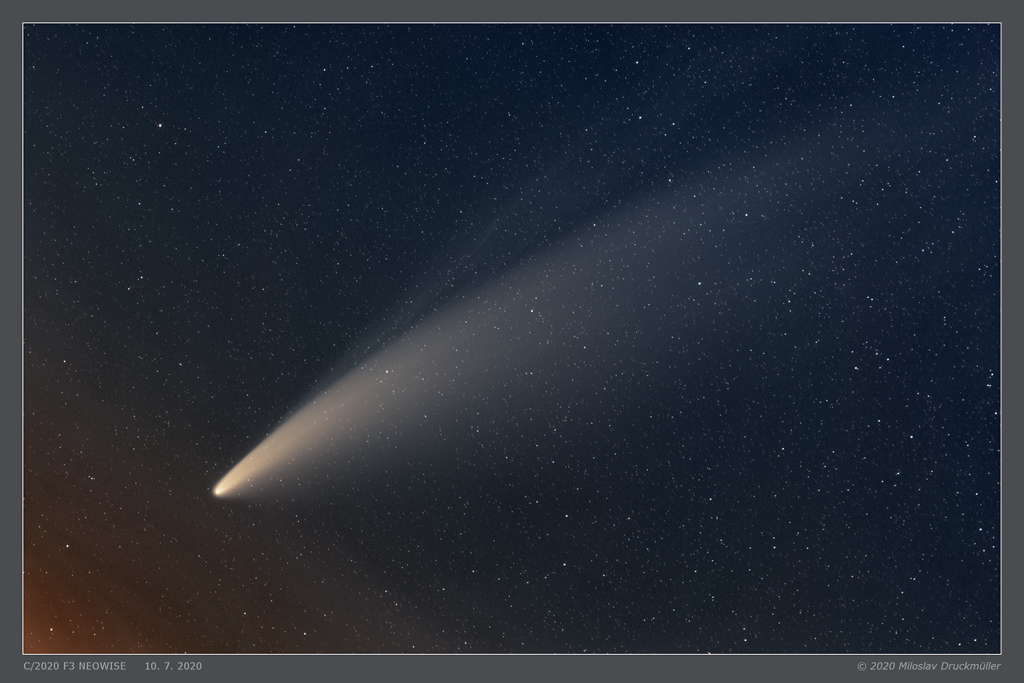2020年7月11日
The Tails of Comet NEOWISE
Image Credit & Copyright: Miloslav Druckmuller (Brno University of Technology)
Explanation: Comet NEOWISE (C/2020 F3) is now sweeping through northern skies. Its developing tails stretch some six degrees across this telescopic field of view, recorded from Brno, Czech Republic before daybreak on July 10. Pushed out by the pressure of sunlight itself, the comet’s broad, yellowish dust tail is easiest to see. But the image also captures a fainter, more bluish tail too, separate from the reflective comet dust. The fainter tail is an ion tail, formed as ions from the cometary coma are dragged outward by magnetic fields in the solar wind and fluoresce in the sunlight. In this sharp portrait of our new visitor from the outer Solar System, the tails of comet NEOWISE are reminiscent of the even brighter tails of Hale Bopp, the Great Comet of 1997.
Comet NEOWISE from Earth’s Surface: Notable Images Submitted to APOD
Tomorrow’s picture: tales of Comet CG
NEOWISE彗星的彗尾
影像提供与版权:Miloslav Druckmuller (Brno University of Technology)
说明:NEOWISE彗星目前在北天飞掠。而在这幅7月10日日出前摄于捷克. 布尔诺的望远镜影像里,这颗彗星曳着绵延约6度的彗尾。其中,这颗彗星受到阳光光压力之推送,而发展出的宽广泛黄尘尾轻易可辨。此外,这张影像也捕捉到另一道较暗和反光尘尾分离的泛蓝彗尾。这道较暗的离子尾,成因是被太阳风磁场带出去的彗发离子,在阳光激发下荧荧生辉。在这颗来自太阳系外围的新访客之清晰影像里,NEOWISE彗星的彗尾,让我们回想起另一颗更明亮,名为1997年大彗星的海尔波普彗星。
来自地球表面的NEOWISE彗星:提交给APOD的著名图像
明日的图片:tales of Comet CG







